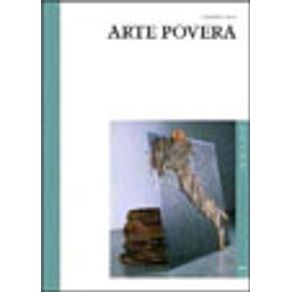Sinopse
Born in the midst of the delicate political situation in Italy in the late 1960s, Arte Povera, introduced by the Italian art critic and curator Germano Celant, was a reaction to Pop and Minimalism, reflecting the anti-establishment mood of the period with its rejection of a consumer society based on profit. Celant's pioneering work and a series of key exhibitions provided a collective identity for a number of young Italian artists in Turin, Milan, Genoa and Rome. The artists - Pistoletto, Fabro, Penone, Merz, Boetti, Paolini, Anselmo, Kounellis, Zorio - succeeded in founding their work on a conception whereby the work existed on its own, outside of theoretic or revolutionary notions. Trusting in a creative gesture involving a concrete act coupled with intellectual speculation, Arte Povera imposes on the artist a strategy poised between the object's material and its conceptual signs. The highly physical character of the work is ultimately expressed in an awareness of the relationship with the viewer. The work arises from primary materials assembled in simple, direct fashion, showing the flow of energy, the transition of forces present in the object. Thus, while joining up with the evolution of contemporary art (from Ready Made to Conceptual Art), Arte Povera claimed a conception of the artwork as tangible experience that allowed it to overcome the aesthetic and political context of the years of its birth. Having achieved international recognition, it appears today as the lastgreat twentieth-century avant-garde movement.
Ficha Técnica
Especificações
| ISBN | 9788874392155 |
|---|---|
| Pré venda | Não |
| Peso | 150g |
| Autor para link | LISTA GIOVANNI |
| Livro disponível - pronta entrega | Não |
| Dimensões | 23 x 16 x 1 |
| Tipo item | Livro Importado |
| Número de páginas | 124 |
| Número da edição | 1ª EDIÇAO - 2006 |
| Código Interno | 236396 |
| Código de barras | 9788874392155 |
| Acabamento | HARDCOVER |
| Autor | LISTA, GIOVANNI |
| Editora | 5 CONTINENTS EDITIONS |
| Sob encomenda | Não |


